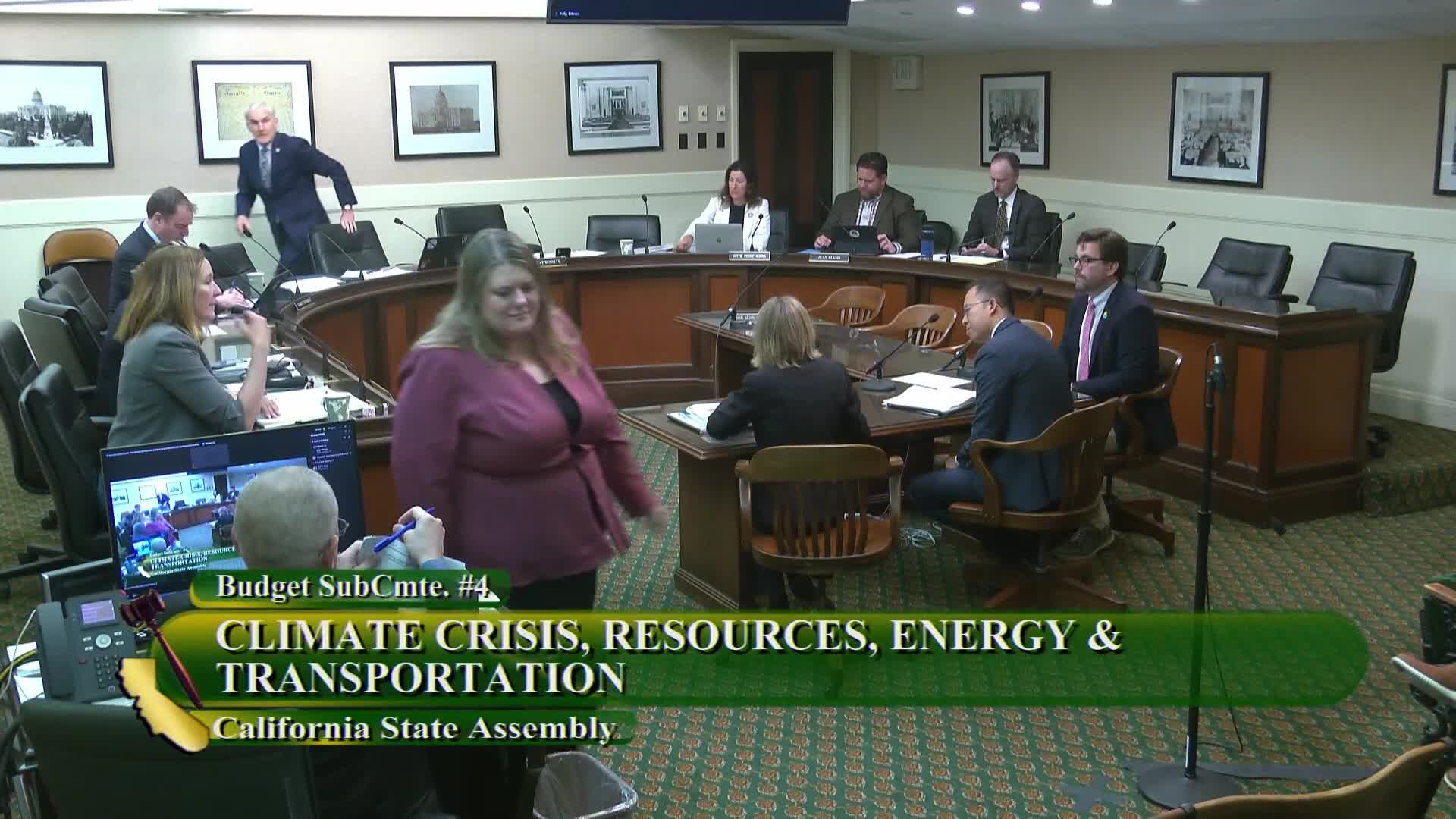California Climate Investments report $33B raised with $1.1B spent on emissions reduction
April 30, 2025 | California State Assembly, House, Legislative, California
This article was created by AI summarizing key points discussed. AI makes mistakes, so for full details and context, please refer to the video of the full meeting. Please report any errors so we can fix them. Report an error »

The Assembly Budget Subcommittee No. 4 on Climate Crisis, Resources, Energy, and Transportation convened on April 30, 2025, to discuss critical issues surrounding California's greenhouse gas reduction funding and the financial implications of the state's climate policies. The meeting focused on the flow of funds into the Greenhouse Gas Reduction Fund (GGRF) and the effectiveness of spending in addressing climate change.
The session began with a discussion on the sources of revenue for the GGRF, highlighting that the transportation energy sector is a significant contributor. Panelists noted that this sector bears the full cost of emissions allowances, unlike large industrial emitters, which receive partial subsidies. Approximately 14% of total allowances are allocated to large industrial emitters, with two-thirds of that amount going to the oil and gas industry. This disparity raises questions about the equity of costs borne by different sectors.
A key point of discussion was the efficiency of GGRF spending. Panelists expressed concerns about the lack of transparency regarding how quickly funds are disbursed and utilized. It was noted that there is insufficient data on annual expenditures from various departments, complicating oversight. The High-Speed Rail Authority was mentioned as an exception, as it provides detailed financial reports.
The conversation also touched on the potential for future GGRF investments in innovative technologies, particularly in carbon capture and nature-based solutions. These technologies, while promising, are currently too costly and not incentivized under existing cap-and-trade programs. Panelists emphasized the need for California to invest in these areas to drive down costs and meet long-term emissions reduction goals.
Mario Cruz from the California Air Resources Board clarified that over $33 billion has been generated through auction proceeds since the program's inception, with approximately $1.1 billion spent to date. He acknowledged that while a significant portion of funds remains unspent, many projects are in the pipeline, requiring time for implementation.
The meeting concluded with a call for improved oversight and reporting mechanisms to ensure that funds are effectively utilized to benefit Californians. The subcommittee plans to continue exploring these issues in future sessions, aiming to enhance the state's climate initiatives and financial accountability.
The session began with a discussion on the sources of revenue for the GGRF, highlighting that the transportation energy sector is a significant contributor. Panelists noted that this sector bears the full cost of emissions allowances, unlike large industrial emitters, which receive partial subsidies. Approximately 14% of total allowances are allocated to large industrial emitters, with two-thirds of that amount going to the oil and gas industry. This disparity raises questions about the equity of costs borne by different sectors.
A key point of discussion was the efficiency of GGRF spending. Panelists expressed concerns about the lack of transparency regarding how quickly funds are disbursed and utilized. It was noted that there is insufficient data on annual expenditures from various departments, complicating oversight. The High-Speed Rail Authority was mentioned as an exception, as it provides detailed financial reports.
The conversation also touched on the potential for future GGRF investments in innovative technologies, particularly in carbon capture and nature-based solutions. These technologies, while promising, are currently too costly and not incentivized under existing cap-and-trade programs. Panelists emphasized the need for California to invest in these areas to drive down costs and meet long-term emissions reduction goals.
Mario Cruz from the California Air Resources Board clarified that over $33 billion has been generated through auction proceeds since the program's inception, with approximately $1.1 billion spent to date. He acknowledged that while a significant portion of funds remains unspent, many projects are in the pipeline, requiring time for implementation.
The meeting concluded with a call for improved oversight and reporting mechanisms to ensure that funds are effectively utilized to benefit Californians. The subcommittee plans to continue exploring these issues in future sessions, aiming to enhance the state's climate initiatives and financial accountability.
View full meeting
This article is based on a recent meeting—watch the full video and explore the complete transcript for deeper insights into the discussion.
View full meeting
